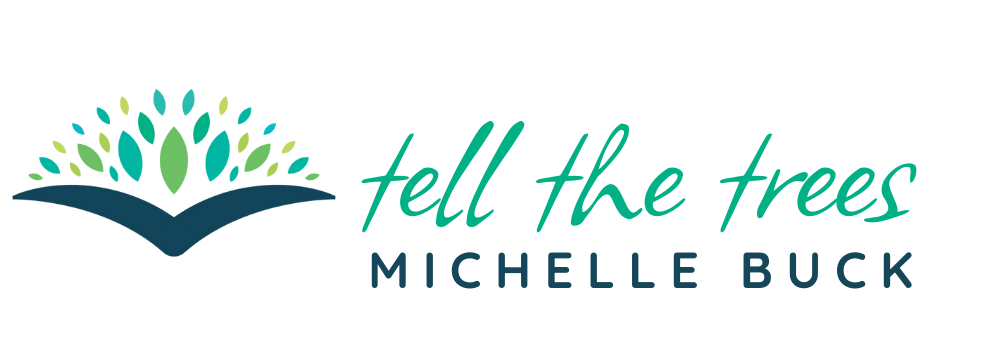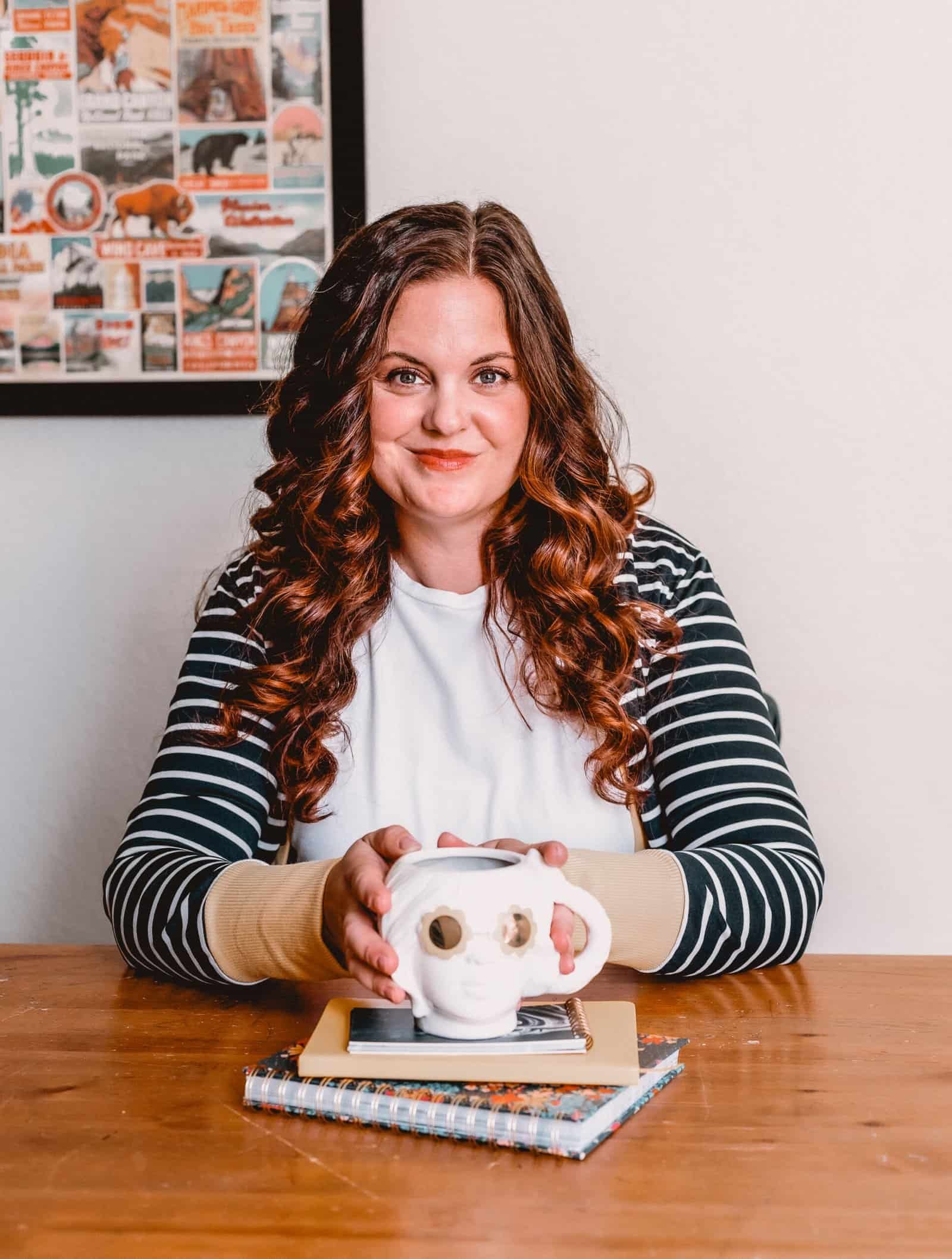by Michelle
Share
by Michelle
Share

One of the most exhausting pieces of advice authors receive is that we need to be on every social media platform. Facebook, Instagram, Twitter, LinkedIn, TikTok, Pinterest, Goodreads, Medium, YouTube, and whatever new platform launched while I was typing this sentence.
Let’s be real: unless you have a full-time social media team (and most of us don’t), being everywhere is a recipe for burnout, mediocre content, and that nagging feeling that you’re always behind.
Instead, I want you to find your platform sweet spot. It’s the one or two places where:
- Your ideal readers already hang out
- You actually enjoy being there
- Your natural communication style fits the platform
This intersection is where the magic happens. It’s where marketing stops feeling like marketing and starts feeling like connecting. And instead of forcing yourself to do anything, it’s a natural transition for your business or brand.
Where Are Your People Actually Hanging Out?
Different platforms attract different audiences. Here’s a quick breakdown of where various types of non-fiction readers tend to gather.
Facebook still dominates for readers over 35, particularly women. The groups feature makes it excellent for building communities around specific topics and interests. If your books address parenting, relationships, spirituality, personal development, or business, your people are likely here.
With that said, Facebook is not without its problems. Since algorithms change a whole lot on Facebook, this limits your organic reach (in other words, the audience that sees your content without you having to pay for it.) Authors are forced to spend their money on ads to even get exposure. They also prefer you keep your audience on Facebook instead of sending them to your website or Amazon.
And of course, Facebook has a butt load of privacy concerns that I can’t even begin to unravel here. Personally, I’m not a fan of Facebook as I know more than a few people that have been locked out of their Meta accounts and unable to even manage their business pages. Getting a hold of someone at Facebook is like trying to enter Fort Knox. Facebook groups might be a good alternative as it helps more with reach and engagement.
Instagram works well for visually-oriented topics and authors who enjoy photography or creating graphics. It’s particularly strong for wellness, mindfulness, cooking, creativity, travel, and lifestyle topics. The audience skews a bit younger, typically 25-45.
While visually appealing, Instagram demands consistent, high-quality imagery which takes time to create. The platform limits you to just one clickable link in your bio (unless you use workarounds like LinkTree), making direct book sales challenging. Algorithm changes have significantly reduced organic reach, and the push toward Reels means adapting to video content even if you’re camera-shy. Hashtag effectiveness has also plummeted in recent years.
LinkedIn is your go-to if you write about business, leadership, career development, or professional skills. The platform has evolved beyond job hunting to become a place for thoughtful business content. The audience here tends to appreciate depth and substance.
LinkedIn’s professional atmosphere can feel stuffy for creative authors outside business niches. The platform rewards daily posting, which gets exhausting quickly. While organic reach beats Facebook, the algorithm favors certain content types like text-only posts and those annoying one-sentence-per-line “broetry” posts. Finding your audience here requires extra creativity if your book isn’t business-related.
After being on LinkedIn for over a year, I left the platform. While I was getting more followers, they weren’t the right kind and I was feeling exhausted from the effort. Some people swear by LinkedIn though so that’s just my own experience.
Pinterest is often overlooked but extremely powerful for certain topics, especially if they involve how-to content. Crafts, home design, personal development, parenting, cooking, and wellness content thrive here.
Pinterest requires significant visual content creation, often dozens of pins for each piece of content. Organic reach has declined as the platform becomes more pay-to-play. It functions as a search engine rather than a social platform, requiring Pinterest-specific SEO mastery. Results typically take 3-6 months to show up, making it a slow-burn strategy rather than a quick win. (Personal note: I use Pinterest and appreciate the traffic I receive from it, but it is a long game and can annoy some people if they want instant results.)
Twitter or X
Twitter/X works for authors who enjoy quick-hit thoughts and participating in larger conversations. It’s good for current events, politics, technology, and academic topics.
Twitter has become increasingly unpredictable with erratic algorithm changes and policy enforcement. Character limits make nuanced discussions difficult, and the fast-paced nature means your content disappears within hours. Building a following requires constant engagement throughout the day – a massive time suck. The often confrontational culture can be draining for authors who prefer positive interactions.
TikTok
TikTok has a surprisingly vibrant non-fiction community, particularly for self-help, psychology, and education. The audience skews younger but is diversifying. Success here requires comfort with video, but doesn’t necessarily mean dancing trends.
The short-form video format demands an entirely different skill set than writing books. Creating engaging videos means investing time in video editing, trend awareness, and probably putting yourself on camera. Data privacy concerns continue to plague the platform. While virality is possible, building consistent viewership requires keeping up with rapidly changing trends and the algorithm frequently pushes you to create more frequently than is sustainable.
I was on TikTok for a hot second and grew tired of it real fast. With that said, there is an engaging BookTok community you could engage and interact with that could possibly grow your book sales.
YouTube
YouTube offers incredible longevity for your content but requires comfort with video and a larger time investment. It works well for teaching, demonstrations, and deeper topic exploration.
YouTube has the steepest learning curve, requiring video production skills, decent equipment, and comfort on camera. Success typically demands consistent posting of high-quality, longer-form content. The algorithm heavily favors channels with existing momentum, making the initial growth phase brutal. Copyright strikes can threaten your channel if you accidentally use protected content, and burnout is common because of the production demands.
I notice a lot of young creators on this channel with bags under their eyes. To avoid this kind of lifestyle, consider breaking up long form content into 7-8 minute videos or using Shorts to get past that initial growth phase. One reason to consider using YouTube is that Google seems to prefer blog posts and other content that contains videos, especially YouTube (as they own the platform).
Substack
Substack has emerged as a powerful platform for authors looking to build direct relationships with readers. It brilliantly combines the best aspects of blogging and email marketing in one clean, reader-friendly package without the social media anxiety. What makes Substack particularly appealing is its simplicity—you focus on writing while they handle the technical stuff like delivery, subscriber management, and monetization options.
For authors, Substack offers a way to connect with readers while building an asset you actually own (your email list). The platform’s clean design puts your writing front and center without distracting ads or algorithm interference. Many authors use it to share behind-the-scenes content, writing processes, or serialized fiction that eventually becomes books. It works particularly well for authors who enjoy longer-form writing and deeper connections with fewer readers rather than superficial engagement with many.
Despite its benefits, Substack isn’t all sunshine and rainbows. Growth is entirely self-driven—there’s no algorithm boosting your content to new audiences like on social platforms. Building a substantial readership takes time and consistent quality. The platform takes a 10% cut of any paid subscriptions, which is higher than some alternatives. And while Substack excels at written content, it’s less optimized for visual or multimedia publishing. For authors publishing infrequently, maintaining subscriber engagement can be challenging compared to the constant stimulus of social media. It also lacks robust community features, so reader interaction happens primarily through comments rather than discussions.
I regularly use Substack and don’t put my content behind a paywall. I use it mostly to build my list which has been pretty amazing. In only a few months, I gained 150 subscribers just by posting one article a week and engaging on Notes.

But Which One Feels Good to YOU?
Some marketing advice assumes that where your audience is should be the only factor in your decision. But if you choose a platform you personally dislike or that doesn’t match your communication style, your discomfort will show through.
Ask yourself:
- Do I naturally think in images, words, or video?
- Do I prefer quick interactions or deeper conversations?
- Am I comfortable on camera or do I prefer writing?
- Do I enjoy preparing polished content or more spontaneous sharing?
- What platform do I already find myself enjoying as a user?
For example, I’m an INFJ who loves depth and meaningful conversations. I find Twitter’s fast pace and character limits frustrating, but I thrive on platforms that allow for longer-form content and community building. Even though I don’t care for TikTok’s constant video creation modes, I still use YouTube as I can record longer content without having to consume a bunch of crap I don’t want to see just to engage with others.
Recognizing this has saved me countless hours of trying to force myself to be something I’m not.
Start With ONE Social Media Platform and Master It
Rather than diluting your energy across multiple platforms, I recommend choosing ONE to start with. Master it, build a genuine connection with your audience there, and then consider expanding if it feels right.
Here’s my checklist for choosing your primary platform:
- Are my ideal readers actively using this platform?
- Does the platform’s primary format (text, image, video, etc.) play to my strengths?
- Can I realistically maintain a presence here without dreading it?
- Does the platform’s culture align with the tone and substance of my work?
Once you’ve selected your platform, commit to it for at least three months before evaluating or adding another. It takes time to find your rhythm and see results.
Pro Tip: When you do start adding more platforms, consider using a scheduling tool like Publer to save yourself time.
What About Your Website and Email List?
Your website and email list aren’t social media platforms, but they’re crucial parts of your online presence. In fact, I consider them your home base as they are the place you own and control completely.
Social media platforms come and go (remember Google+?), and algorithms change constantly. Your website and email list belong to you. They’re where your passive visibility strategy ultimately leads.
Think of social media as the paths that lead people to your home, not the home itself.
In the next section, we’ll explore how to create content that feels authentic to you while still strategically growing your audience without becoming a slave to the algorithm.
Tell the Trees is supported by its readers. When you make a purchase using links on this site, it may result in affiliate commission. Please visit my affiliate disclosure page for more information.
Let's Discuss It
You don't need to create content constantly to build an effective author platform. What you need is a sustainable approach that honors your energy while still connecting with readers.
This Social Media Book Marketing guide is for thoughtful, empathetic non-fiction authors – especially those of you who are coaches, healers, and creatives.







